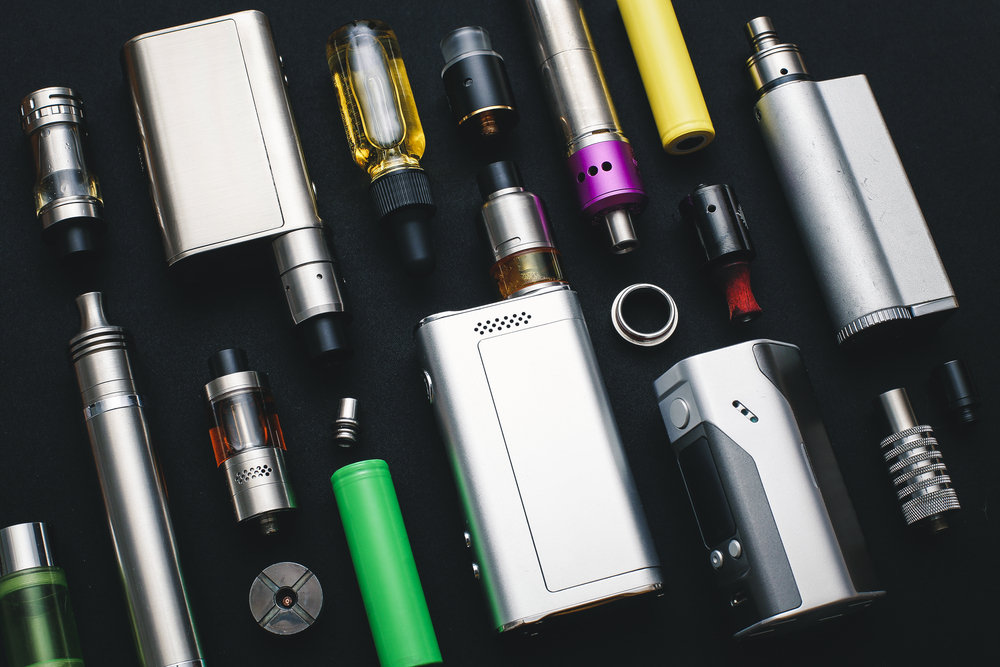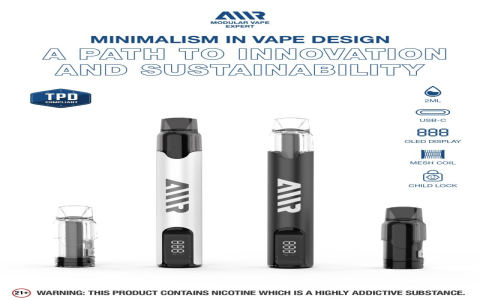Electronic cigarette design integrates principles from electrical engineering, material science, fluid dynamics, industrial design, and user experience. The primary goal is to create a device that effectively vaporizes an e-liquid for inhalation while ensuring safety, reliability, and user satisfaction.
Core Components and Design Implications
The design of an e-cigarette revolves around several key components, each with specific design considerations:

- Battery: The power source, typically a lithium-ion cell. Design focuses on capacity (mAh for longevity), discharge rate (C-rating for power delivery), form factor (cylindrical, pouch), and safety features (protection circuits). Voltage and power output capabilities are critical for atomizer performance.
- Atomizer (Heating Element & Wick): This is where vaporization occurs. Design involves coil material (e.g., Kanthal, stainless steel, nickel, titanium), coil resistance (ohms), coil structure (e.g., single, dual, mesh), and wicking material (e.g., organic cotton, ceramic). The design aims for efficient heating, consistent wicking, optimal flavor production, and vapor density. Airflow integration within the atomizer is also crucial.
- Tank/Cartridge/Pod (E-liquid Reservoir): Holds the e-liquid. Design considerations include material (e.g., glass, PCTG, polycarbonate) for chemical compatibility and clarity, capacity, ease of filling, leak resistance, and e-liquid visibility. For pod systems, the connection mechanism to the battery section is also a key design point.
- Mouthpiece (Drip Tip): The user interface for inhalation. Material (e.g., Delrin, Ultem, resin, metal), bore size, and shape affect comfort, heat dissipation, and vapor characteristics (e.g., a wider bore often allows for more airflow and cooler vapor).
- Circuitry & Controls (PCB): The brain of the device, especially in regulated mods. This includes microcontrollers, power regulation components, user interface elements (buttons, screens, LEDs), and safety protection features. Design focuses on efficiency, accuracy (e.g., power output, temperature sensing), responsiveness, and durability. Activation mechanisms (draw-activated vs. button-activated) are also driven by PCB design and sensor integration.
Key Design Considerations
Several overarching factors guide the e-cigarette design process:
- User Experience (UX) & Ergonomics: This encompasses the device’s feel, ease of use, and overall interaction. Key aspects include form factor (shape, size, weight), grip comfort, button placement and tactility, intuitiveness of refilling and coil replacement, and clarity of indicators (LEDs, screens).
- Performance & Vapor Quality: Designers aim to balance power output, temperature control (if applicable), airflow adjustability, and atomizer efficiency to deliver desired vapor volume, flavor intensity, throat hit, and temperature.
- Material Selection: Materials must be chosen for durability, heat resistance, chemical inertness (especially for parts in contact with e-liquid), electrical conductivity/insulation, and aesthetics. Food-grade and medically safe materials are often preferred for components in the vapor path.
- Safety Features: Critical for user protection. Common features include short-circuit protection, over-charge/discharge protection, overheat protection, low voltage cutoff, and often child-resistant mechanisms, particularly for e-liquid containers.
- Aesthetics & Form Factor: Visual appeal, portability, and market trends significantly influence design. This ranges from discreet pen-style devices and compact pod systems to more powerful and customizable box mods. Finish, color, and branding are also important.
- Manufacturing & Assembly (DFM/DFA): Designs must be optimized for efficient and cost-effective mass production. This includes minimizing part count, simplifying assembly steps, and selecting materials and processes that align with production capabilities.
- Regulatory Compliance: Adherence to varying international, national, and local regulations concerning device safety, material composition, battery standards, nicotine delivery limits, packaging, and labeling is paramount.
Design Trends and Innovations
The e-cigarette market is dynamic, with ongoing innovation:
- Pod Systems: Focus on simplicity, portability, and ease of use, often utilizing pre-filled or refillable pods.
- Disposable Devices: Growing in popularity for convenience, with designs increasingly focused on maximizing puff count, flavor delivery, and ergonomic comfort within a single-use format.
- Smart Features: Integration of Bluetooth connectivity, companion mobile apps for usage tracking, customizable settings, and firmware updates.
- Improved Coil Technology: Mesh coils and new wicking materials are continually being developed to enhance flavor, vapor production, and coil longevity.
- Haptic Feedback: Some newer devices incorporate haptic feedback for user notifications and interactions.
Challenges in E-cigarette Design
Designers face ongoing challenges:
- Battery Life vs. Portability: Balancing user demand for longer battery life with the desire for smaller, more portable devices.
- Leak Prevention: A persistent issue, requiring careful engineering of seals, pressure differentials, and filling mechanisms.
- Thermal Management: Effectively dissipating heat generated by the coil and battery, especially in high-power devices and compact designs.
- Consistency and Reliability: Ensuring consistent performance across manufactured units and over the lifespan of the device.
- Material Degradation: Preventing issues like e-liquid interaction with plastics or oxidation of coil materials over time.










